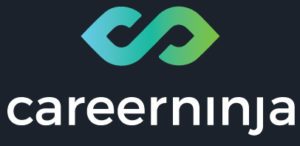Are you passionate about pursuing a career in web development but not sure where to study from?
Don’t worry, we’ve got you covered!
If you are on the lookout for introductory online web development courses that don’t require you to be a genius in programming, this article is just for you. The online courses listed below are not only free of cost, but will also introduce you to the world of web development in the easiest way possible.

Here’s a list of the top free online web development courses in no particular order!
BASICS ALL WEB DEVELOPERS NEED TO KNOW – HTML, CSS, JAVASCRIPT, GIT

1. Introduction to HTML and CSS by Codeacademy
If you’re new to web development and want to start off with something easy, then we recommend the Introduction to HTML and Introduction to CSS courses by Codeacademy.
You’ll learn all the common HTML tags used to structure HTML pages and all about HTML tables. The CSS course will teach you several aspects of styling and structuring web pages.
Duration: Introduction to HTML – 4 hours; Introduction to CSS – 15 hours
2. Intro to HTML and CSS by Udacity
As far as online web development courses are concerned, this one is quite popular.
Using a combination of interactive quizzes, instructional videos, expert insights, and independent exercises, this course aims to teach you how to create websites and how to apply styling to a website through CSS.
This course is also far more complete and slightly more challenging.
Duration: 3 weeks
Prerequisites: Using text editors such as Sublime or Atom, Google Chrome
3. Introduction to JavaScript by Codeacademy
JavaScript (JS) is one of the most popular, flexible, and powerful programming languages for the web.
What’s more, this programming language is used by front-end as well as back-end developers, thanks to popular frameworks such as Node.JS, AngularJS, and React.
To get started, you can take this free course offered by Codeacademy that covers object-oriented programming using JS and its syntax.
Duration: 30 hours
Pro tip
Once you’re familiar with the JS basics, read this free book titled Eloquent Javascript: A Modern Introduction to Programming by Haverbeke. It’s a bit tough but covers all the concepts within JS along with some coding challenges for you to practice what you learn. Finishing this book would give a thorough grasp of JavaScript.
4. Learn Git with Codeacademy and Udacity
Git is the most popular version control tool that developers use to not only save their work but also to collaborate and share their work with others. Both Codeacademy and Udacity offer free courses on Git, its overview, and basic Git commands.
Duration: Learn Git basics for free by Codeacademy (10 hours); How to use Git and GitHub by Udacity (3 weeks)
Prerequisites: HTML
Pro tip
There are tons of free resources on Git, branching, and Git commands here on Github. For more advanced commands, check out the Atlassian Git Tutorials.
FRONT-END DEVELOPMENT

5. Make a website by Codeacademy
If you’re just getting started, then this introductory course is a great way of getting hang of things. This course uses HTML5, CSS3, and Bootstrap to teach you to build four simple websites.
You can use your knowledge of HTML, CSS, and even JavaScript to build on to these concepts.
Duration: 7 hours
Prerequisites: HTML and CSS
Front-end programming languages
Other than JavaScript, another popular programming language amongst front-end web developers is Python.
6. Responsive web design fundamentals by Udacity
With the whole digital space increasingly going mobile, we know mobile is the future.
As a front-end developer, you need to create web pages with a ‘mobile-first’ principle, for which you need to make sure your web pages are responsive. This Udacity course teaches the fundamentals of responsive web design with Google’s Pete LePage so that you can build web pages that work on any device – desktop, tablet, phone.
Duration: 2 weeks
Prerequisites: HTML and CSS
7. The Basics of Chrome Developer Tools by Udemy
Google’s built-in Chrome Developer Tools allow developers to do a thorough performance analysis of their websites. This is one of the most important debugging tools in a front-end developer’s toolkit.
Which is why this free Udemy course is a great way to get started.
Duration: 45 minutes
Prerequisites: HTML, CSS, and JavaScript
8. Front-end libraries certification by Freecodecamp
Libraries facilitate complex processes into simple and easy to use one-line code commands. Libraries are made up of different functions that combine together frequently used methods, to ease the process of manipulating and altering your code.
This free course by Freecodecamp covers jQuery, Bootstrap, React, Sass, Redux, and then makes you apply what you learned on their projects. You have to complete these projects (usually five projects per certification) to earn the certification.
Duration: 300 hours
Prerequisites: HTML, CSS, JavaScript
BACK END DEVELOPMENT
9. Deploy a website by Codeacademy
Deploying a website implies pushing your code to a server. This is how anyone on the internet can access your website. This basic course teaches you how to publish your website to the internet using Jekyll, GitHub Pages, and AWS.
Duration: 2 hours
Prerequisites: Working knowledge of GitHub and fundamentals of building a website
Back-end programming languages
As a back-end developer, you should be familiar with server-side programming languages such as PHP and Ruby, other than JavaScript and Python.
10. Beginner PHP and MySQL tutorial by Udemy

If you’re a newbie to PHP and have no idea what to do, this course is a great starting point. It walks you through how to create a functional PHP / MySQL interface from beginning to end. A Verifiable Certificate of Completion is presented to all students who undertake this course.
Duration: 10.5 hours of video lectures
Prerequisites: HTML, CSS, and basic knowledge of making a website
Pro tip
PHP: The Right Way is an easy-to-read, quick reference for PHP popular coding standards, links to authoritative tutorials around the Web and what the contributors consider to be best practices at the present time.
Backend Frameworks
11. Introduction to Node.JS by EdX
Node.js is the most popular JS server-side framework. It allows developers to reduce bottlenecks in their applications and create fast sites that users love.
Companies like Netflix and Uber use Node.JS for their businesses. This free course taught by Microsoft and Node University covers everything about getting started with Node.JS.
Duration: 4 weeks
Prerequisites: HTML, CSS, Programming basics, Web development basics
12. Get started with Angular by Egghead.io
Angular is one of the most popular Javascript frameworks for building web applications. There is a huge demand for Angular in the market, which has increased jobs for people who are skilled in Angular.
The Guardian, Upwork, PayPal are some of the major websites using Angular. This free short course teaches you how to build a simple application and style it using Angular.
Duration: 26 minutes
Prerequisites: HTML, CSS, working knowledge of building a website
13. Ruby on Rails: An Introduction
According to Ruby-lang.org, Ruby is a dynamic, open source programming language with a focus on simplicity and productivity. It has an elegant syntax that is natural to read and easy to write.
And Rails is the framework that companies such as Twitter, AirBnB, Basecamp, and GitHub use. So it’s a powerful framework worth learning as it is one of the most powerful ways to quickly develop web applications.
Ruby on Rails has a high relevance and demand in today’s marketplace. This course explores how to build web apps with the Ruby on Rails web app framework. This course is created by the University of John Hopkins and it facilitates quick prototyping. that is, building quickly. By the end of this course, you will be comfortable building a meaningful web app and you’ll also be able to deploy it to the ‘cloud’. To complete this course, you will need to pass all the graded assignments.
Duration: The required study time for this course is 2-3 hours per week for 3 weeks.
Pro tip
Ruby monk is a fun website that offers interactive courses for beginners. It’s highly recommended by none other than Yukihiro Matsumoto, the creator of Ruby.
CONCLUSION
Taking a free online course is the best way to find out if a subject interests you after you’ve been introduced to it. You can even use these online web development courses to develop your horizons and further boost your chances of getting employment.
Found this article interesting? Click here to find out how to get an internship in web development.
































